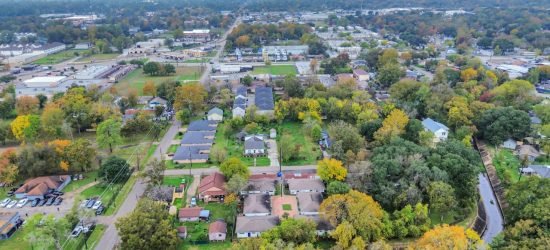Managing neighbourhood disorders is a crucial task for maintaining a safe, peaceful, and harmonious community. Neighbourhood disorders can range from minor nuisances like noise complaints to more severe issues such as vandalism or substance abuse. Addressing these problems promptly and effectively can prevent escalation and improve the overall quality of life for residents. In this comprehensive guide, we’ll explore various strategies and best practices for managing neighbourhood disorders.
Understanding Neighbourhood Disorders

Neighbourhood disorders refer to behaviors or situations that disrupt the normal functioning and peace of a community. Effectively managing neighbourhood disorders involves addressing the following issues:
- Noise Complaints: Loud music, parties, or construction work that can disturb the peace and quiet of the community.
- Vandalism: Acts of graffiti, broken windows, or other forms of property damage that can create an unsafe and unattractive environment.
- Littering and Illegal Dumping: Improper disposal of trash or hazardous waste that can lead to environmental and health hazards.
- Public Intoxication and Substance Abuse: Individuals under the influence causing disturbances, which can lead to safety concerns for residents.
- Loitering: Groups gathering in public spaces in a manner that can potentially intimidate or inconvenience residents.
- Pet Complaints: Issues arising from pets, such as excessive barking or unsupervised animals, that can lead to conflicts among neighbors.
Strategies for Managing Neighbourhood Disorders

1. Community Engagement and Communication
Effective management of neighbourhood disorders begins with open communication and active community engagement. Building a strong sense of community can deter potential troublemakers and encourage residents to look out for one another. Managing neighbourhood disorders involves several key strategies to foster collaboration and proactive problem-solving among community members:
- Regular Meetings: Organize community meetings to discuss ongoing issues and brainstorm solutions. These gatherings provide a platform for residents to voice their concerns, share ideas, and work together to develop effective strategies for managing neighbourhood disorders.
- Social Media Groups: Create and maintain online groups for residents to share information and report concerns. These digital platforms can facilitate quick communication and help residents stay informed about any suspicious activities or emerging issues within the neighborhood.
- Newsletters: Distribute regular newsletters with updates on community activities and safety tips. Newsletters can keep residents informed about recent developments, upcoming events, and provide valuable advice on preventing and managing neighbourhood disorders.
- Community Events: Host events such as block parties, clean-up days, or safety workshops to strengthen community bonds. These events can foster a sense of ownership and pride among residents, making them more likely to take an active role in maintaining the peace and order of their neighborhood.
- Neighborhood Watch Programs: Establish neighborhood watch programs to encourage residents to monitor their surroundings and report any suspicious activities. These programs can enhance the sense of security and empower residents to contribute to the overall safety of their community.
- Feedback Mechanisms: Implement feedback mechanisms, such as suggestion boxes or online surveys, to gather input from residents on how to improve the management of neighbourhood disorders. This allows for continuous improvement and ensures that the community’s needs are being addressed effectively.
2. Collaboration with Local Authorities

Working closely with local authorities, such as the police and city council, can significantly enhance the management of neighbourhood disorders. Authorities can provide resources, support, and enforcement when necessary. Here’s how to collaborate effectively to ensure efficient managing neighbourhood disorders:
- Establish Contacts: Build relationships with local law enforcement and municipal officials. Establishing a network of reliable contacts within local authorities can facilitate prompt responses to incidents and ensure that community concerns are addressed efficiently.
- Report Incidents: Encourage residents to report incidents promptly to authorities. Clear communication channels between the community and local authorities can ensure timely intervention and resolution of issues, preventing minor problems from escalating.
- Community Policing: Advocate for community policing initiatives where officers engage directly with residents. Community policing fosters trust and cooperation between law enforcement and residents, making it easier to manage neighbourhood disorders through a collaborative approach.
3. Implementing Preventative Measures
Prevention is always better than cure. Implementing preventative measures can reduce the likelihood of neighbourhood disorders occurring. Consider these actions to proactively manage neighbourhood disorders:
- Environmental Design: Improve lighting, maintain cleanliness, and design public spaces to be welcoming and safe. Well-lit and clean environments can deter criminal activities and promote a sense of safety among residents.
- Surveillance Systems: Install CCTV cameras in strategic locations to deter criminal activity. Visible surveillance systems can act as a deterrent to potential offenders and provide valuable evidence in case of incidents.
- Neighborhood Watch Programs: Encourage residents to participate in watch programs to monitor and report suspicious activities. Active neighborhood watch programs can enhance vigilance and foster a sense of collective responsibility among residents.
4. Conflict Resolution and Mediation
Sometimes, conflicts between residents can lead to neighbourhood disorders. Providing conflict resolution and mediation services can help resolve disputes amicably. Here’s how to facilitate this to effectively manage neighbourhood disorders:
- Mediation Services: Offer access to professional mediators to help resolve conflicts. Professional mediators can provide neutral and expert assistance in resolving disputes, ensuring that conflicts do not escalate into more significant issues.
- Training Workshops: Conduct workshops on conflict resolution skills for residents. Educating residents on effective conflict resolution techniques can empower them to handle disputes constructively and prevent tensions from affecting the broader community.
- Peer Mediation: Train community members to act as peer mediators. Peer mediators can provide a relatable and accessible resource for residents, helping to address conflicts promptly and fostering a cooperative community spirit.
5. Education and Awareness Campaigns

Educating residents about their rights and responsibilities can foster a culture of respect and cooperation, which is crucial for managing neighbourhood disorders. Awareness campaigns can also inform residents about the impact of their actions on the community. Consider the following approaches to enhance community understanding and involvement:
- Workshops and Seminars: Organize educational sessions on community living and legal responsibilities.
- Awareness Drives: Run campaigns highlighting the consequences of common neighbourhood disorders.
- Resource Distribution: Provide informational pamphlets and resources to residents.
6. Enforcing Community Rules and Regulations
Having clear rules and regulations, and ensuring they are enforced, is vital for managing neighborhood disorders. Here are some enforcement strategies:
- Clear Guidelines: Develop and disseminate community guidelines and bylaws.
- Fines and Penalties: Implement fines for non-compliance with community rules.
- Regular Inspections: Conduct regular inspections to ensure adherence to community standards.
Best Practices for Long-Term Success

To achieve long-term success in managing neighbourhood disorders, communities should adopt the following best practices. These approaches foster a sustainable, inclusive, and proactive environment that ensures the ongoing well-being of all residents:
- Consistent Communication: Maintain regular communication channels between residents and authorities. Establishing reliable and continuous communication helps to keep everyone informed about ongoing issues, initiatives, and resolutions. It also ensures that residents feel heard and supported by local authorities, which can enhance community trust and cooperation.
- Proactive Approach: Address issues before they escalate by being proactive rather than reactive. Implementing preventative measures, regular monitoring, and early interventions can significantly reduce the likelihood of minor issues developing into major neighbourhood disorders. This approach helps maintain a stable and peaceful community environment.
- Inclusivity: Ensure all community members, including marginalized groups, are involved in decision-making processes. Inclusivity in decision-making fosters a sense of belonging and ensures that the needs and concerns of all residents are considered. This holistic approach can lead to more effective and comprehensive solutions for managing neighbourhood disorders.
- Sustainability: Implement sustainable practices that ensure the ongoing well-being of the community. Sustainable practices can include environmental stewardship, such as regular clean-up drives and maintaining green spaces, as well as social initiatives like continuous education and community-building activities. These efforts help create a resilient and enduring community structure.
Conclusion
Managing neighbourhood disorders is a multifaceted task that requires cooperation, communication, and a proactive approach. By engaging the community, collaborating with authorities, implementing preventative measures, and fostering a culture of respect and responsibility, communities can effectively manage and mitigate neighbourhood disorders. This not only enhances the quality of life for residents but also builds a safer, more cohesive community.











